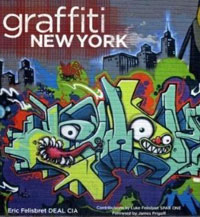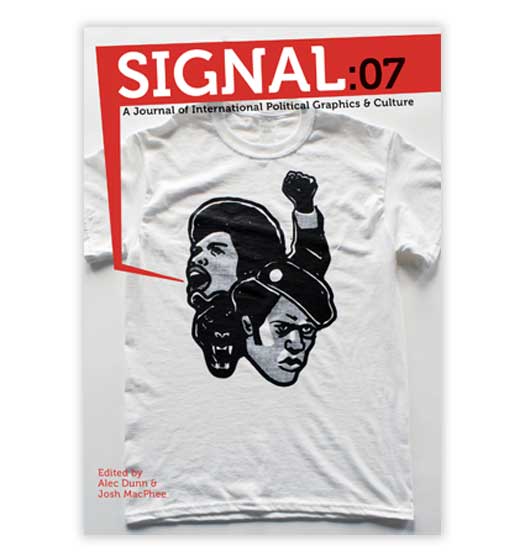
Eric “DEAL CIA” Felisbret
Graffiti New York
Abrams, 2009
Contrary to the title, this book isn’t just one of the seeming endless herd of books called “Graffiti ______” (insert just about any city name here). Even though it appears that the ability to walk around, take digital photos, and be culturally connected are the only pre-requisites for a street art book deal these days, the likely interesting city/street art books, such as “Graffiti Tulsa” or “Nairobi Graffiti,” never get made). But back to the book at hand, Eric “DEAL CIA” Felisbret has set his sights higher, and done the labor and put in the time to produce the rare satisfying graffiti publication. An attempt to update the classic Subway Art, I’m glad he went for the challenge, and appreciate the parts that succeed.
The first quarter of the book is a collection of photos, writing, and quotes from early NYC writers and even a couple vandal squad members, and for me this is the richest part of the book. In particular, the transition period between the early subway car years and the current street regime is fascinating and under-explored. Here’s my favorite anecdote from the book:
Lt. Steve Mona: The day that the MTA drew a line in the sand was when the ACC crew hit 130 cars in the Coney Island yard. The MTA had a choice that day: run trains with graffiti on them, or provide no service on two lines. They opted to provide no service. I think that was one of the knife blows to that aspect of the graffiti movement. ACC must have thought, “”Well if we hit enough cars, they have to run them, They can”t not provide service.” But that’s what Transit did that day. They pulled cars from other lines and you had to wait an hour for a train that morning.”
I could read an entire volume dedicated to this type of material, this is the shit! It’s amazing that the city decided it was better to have hundreds of people stranded on the platforms than run a handful of trains with paint on them.

The rest of the book is broken down into sections: “The Code,” “Form, Technique, & Aesthetics,” “The Community,” “The Five Boroughs,” “The Gallery Scene,” and “The Media.” Not too much new turf is tread, but it’s a decent overview, there are tons of great photos and the book avoids awkward outsider pitfalls of earlier, more academic studies like Castleman’s Getting Up, and Austin’s Taking the Train. Unfortunately for Felisbret, he is limited by his subject matter more than anything else. The early days of graf seem infinitely interesting because the culture was growing and changing by leaps and bounds, it was literally in formation, but for the past 10-15 years it has slowed down to a crawl (or hobble). This stasis has likely protected certain aspects of graffiti culture from collapsing under intense repression from police, clean-up crews, and private property fanatics. At the same time, the strict rules that dictate what is and isn’t proper “graffiti” has certainly limited it’s potential to interest anyone outside the culture itself, especially anyone over 15 years old that has seen roughly the same throw-ups and tags go up on the same walls over and over for decades now.

The book flounders in the contemporary period, as it seems most writers have added little to the existing culture, and clearly have little interesting to say about it. Contemporary graffiti writing is a language and lifestyle that speaks almost exclusively to other writers. While learning about how the pioneers discovered fat caps on stove top cleaner cans and figured out complicated schemes for stealing paint or breaking into train yards is fascinating, there’s little interesting about kids being sponsored by European spray paint companies and stumbling around the city drunk writing their names over and over on everything they see. Been there, done that. Next?
Thanks to Felisbret for the insights into the early years, and may we all hope some kids come along who are as innovative, inventive, and fearless as LEE, PHASE 2, DONDI, and all the other forerunners, the time has come for some fresh air.







